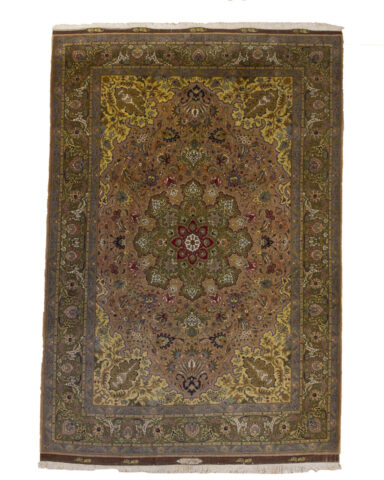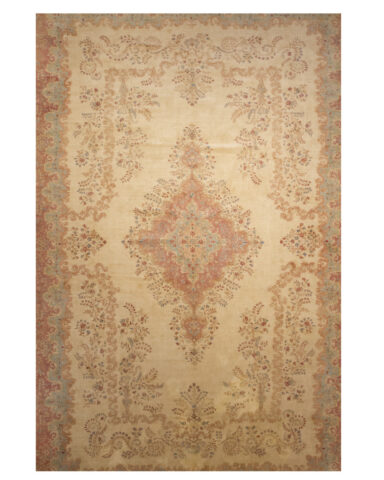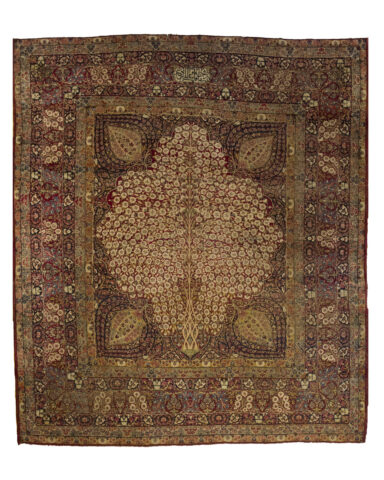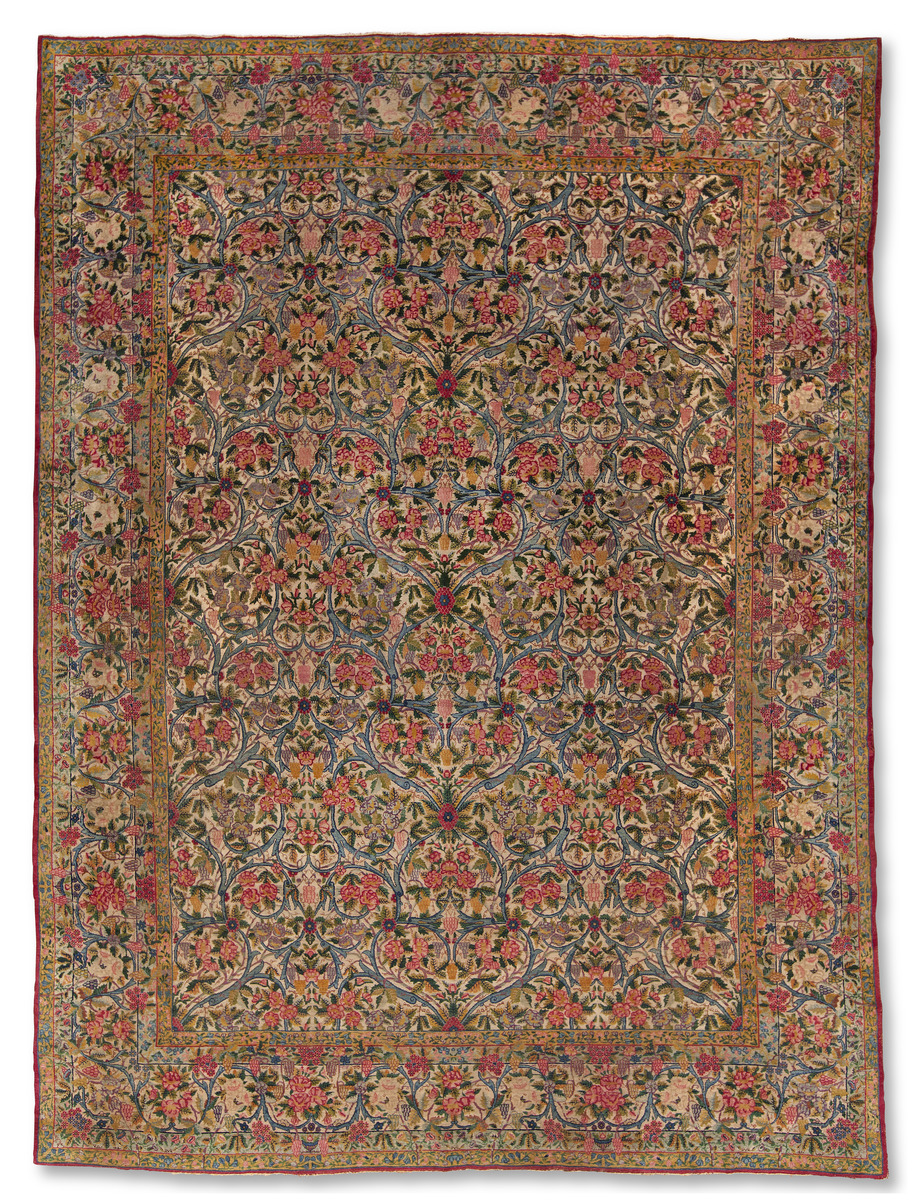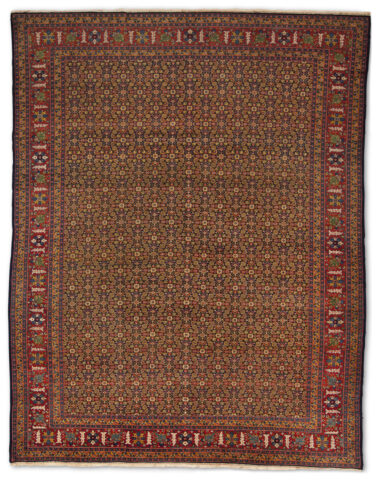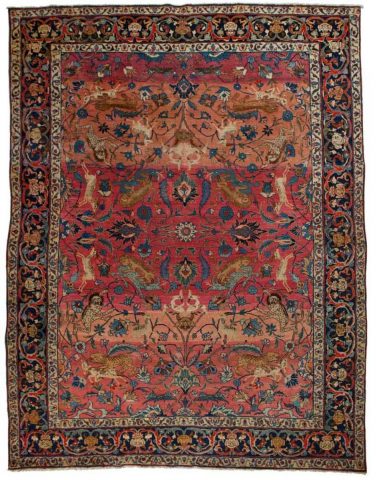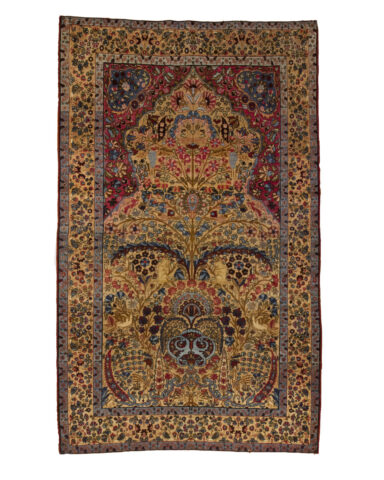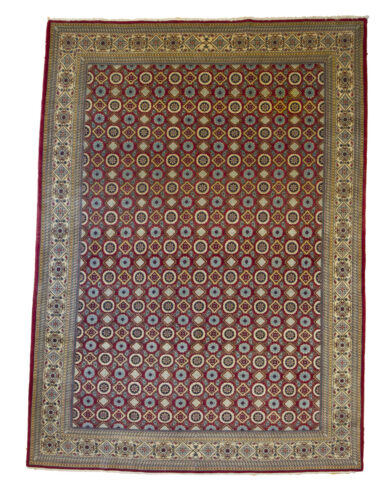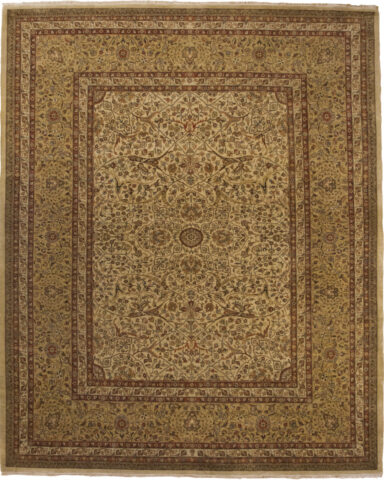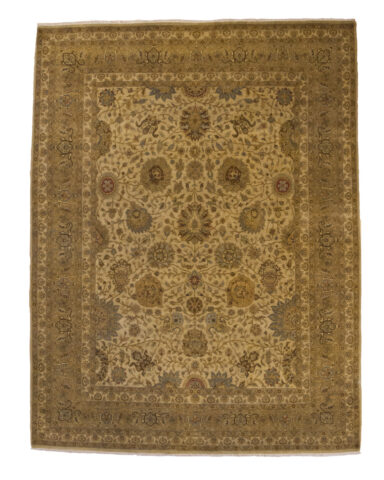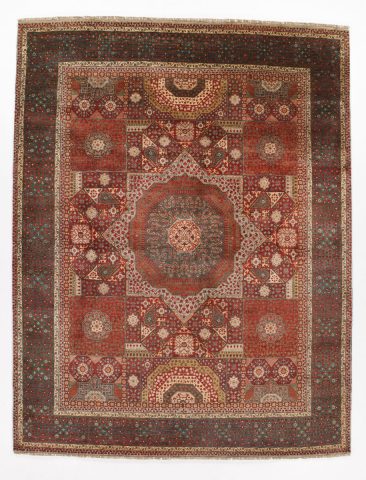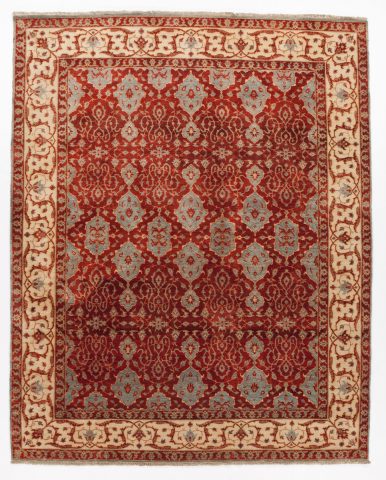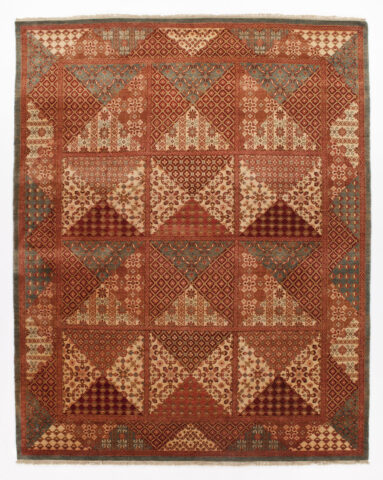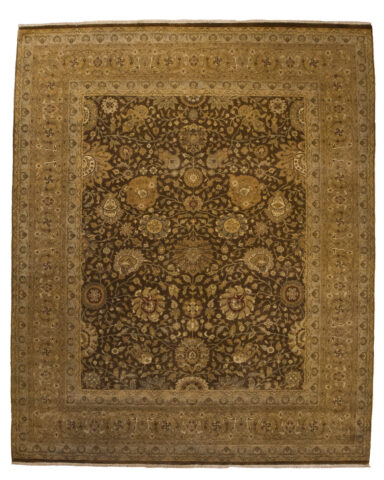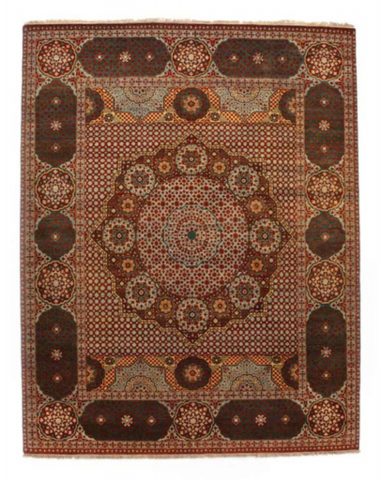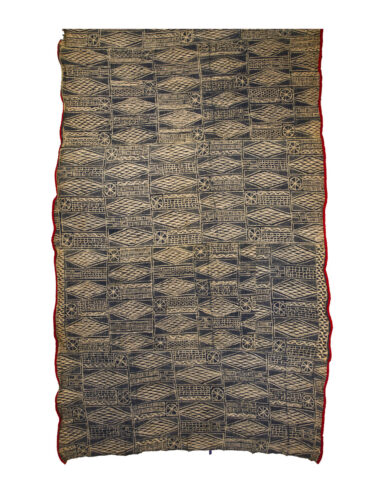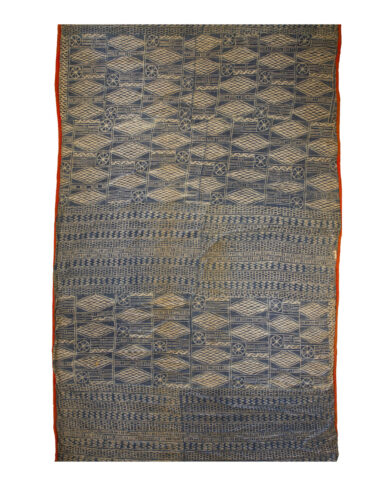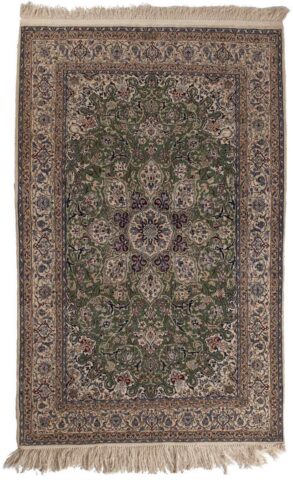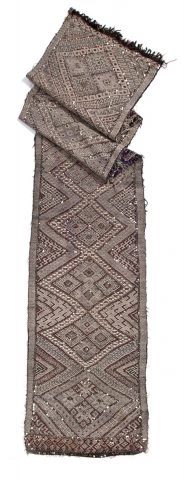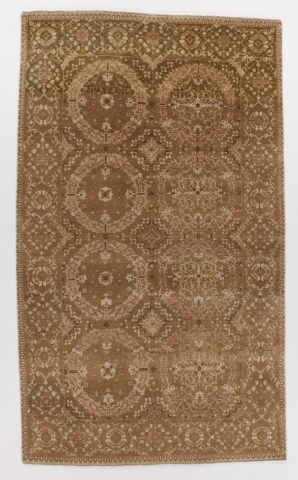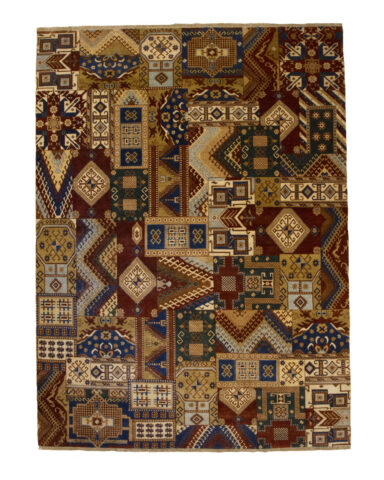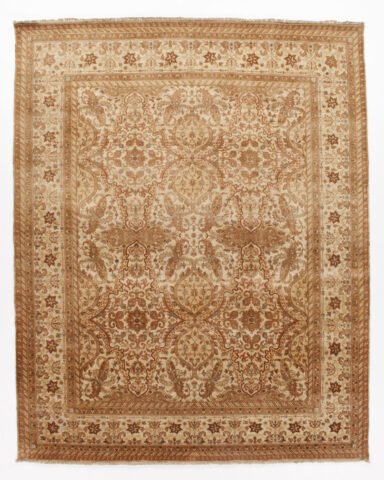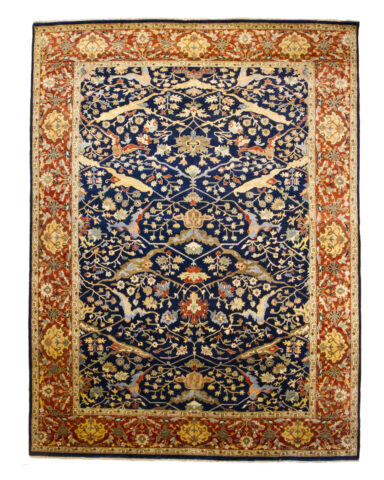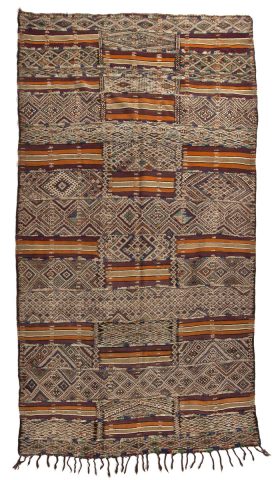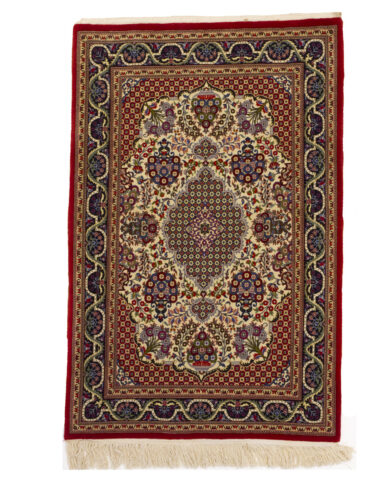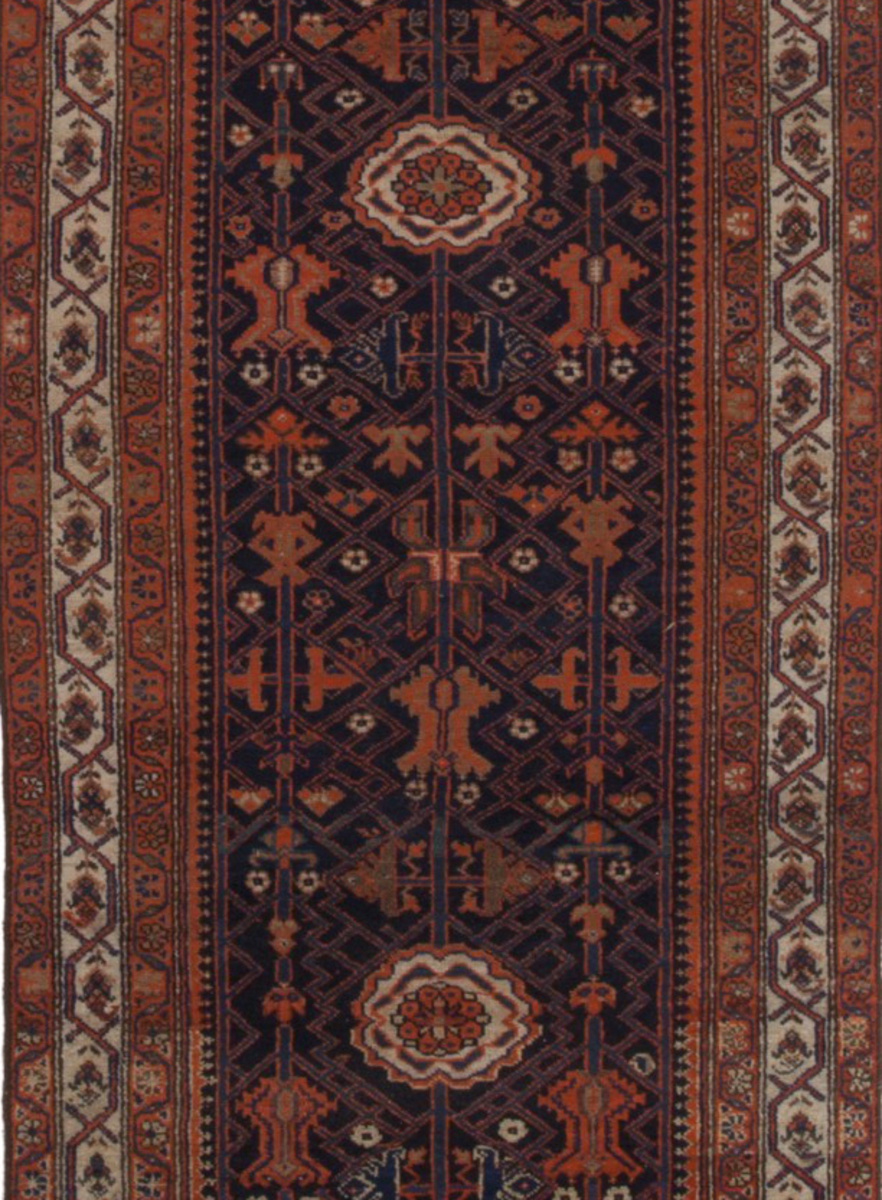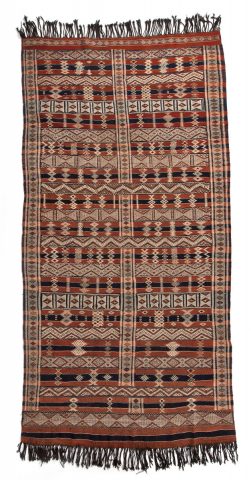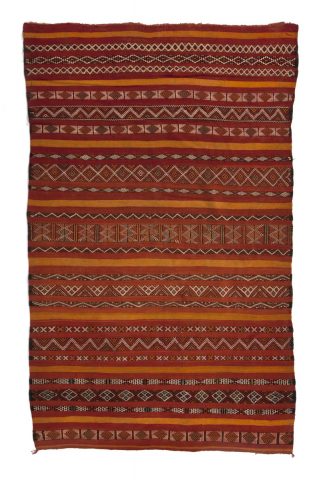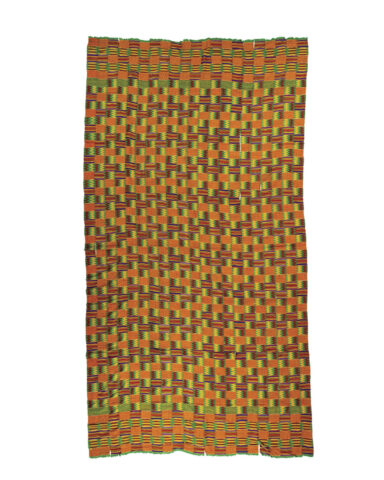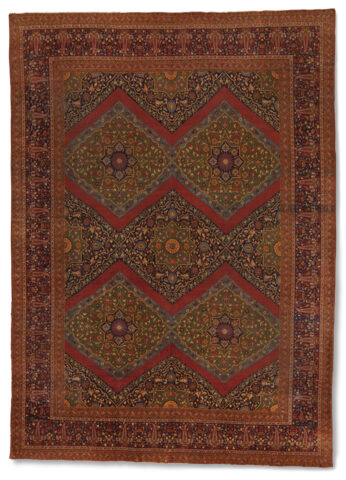Description
Bakhtiari carpets originate from the Bakhtiari tribe, a nomadic group primarily located in the Zagros Mountains. While the tribe is known for producing various types of rugs, the large Bakhtiari carpets produced in the early to mid-20th century are particularly noteworthy for their distinctive characteristics:
Size: Large Bakhtiari carpets are unique for their expansive dimensions, often measuring several meters in length and width. These grand carpets were traditionally used to decorate the floors of palaces and large residences, making a statement with their impressive size and intricate designs.
Central medallion: A prominent feature of these Bakhtiari carpets is the central medallion, which often has a geometric, diamond, or floral shape. The medallion is surrounded by a complex and harmonious pattern, drawing the eye to the center of the piece and serving as the primary focal point of the design.
Floral field: The field surrounding the central medallion is filled with lush, stylized floral motifs. These intricate patterns often feature an abundance of flowers, vines, leaves, and other natural elements, reflecting the Bakhtiari tribe’s close connection to nature. The floral field creates a sense of depth and movement, making the carpet visually dynamic and engaging.
Bold color palette: Bakhtiari carpets from the early to mid-20th century are known for their rich and vibrant color palettes. Natural dyes were used to create a range of hues, including deep reds, blues, greens, and yellows. The bold colors add warmth and energy to the overall design.
Distinctive borders: Large Bakhtiari carpets often feature multiple borders, each with its own unique pattern. The borders typically consist of geometric or floral motifs, harmoniously complementing the central medallion and field. These borders frame the carpet, adding an additional layer of visual interest and complexity to the design.
Weaving technique: Bakhtiari carpets are woven using the Persian knot, or asymmetrical knot, which allows for the creation of detailed and intricate patterns. The carpets usually have a wool pile on a cotton or wool foundation, with a relatively high knot density for durability and longevity.
Village and workshop production: Unlike some other tribal carpets, large Bakhtiari carpets with central medallions and floral fields were often produced in village workshops rather than by nomadic weavers. This allowed for greater consistency in the designs and quality of the carpets, as well as the ability to create larger pieces.
These attributes make them highly sought-after pieces among collectors and admirers of Persian carpets.


